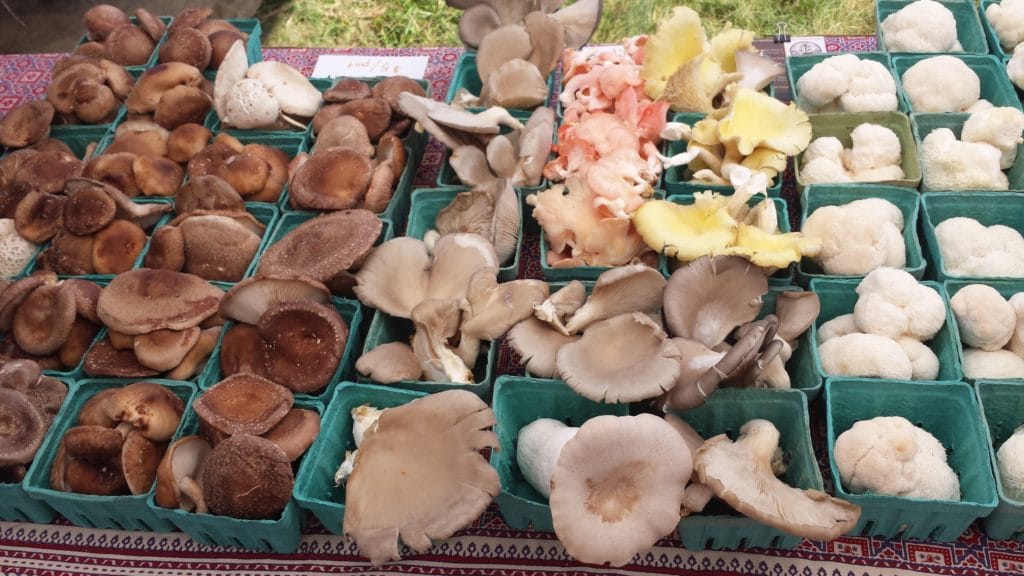Mushroom farm Specialty Cultivation

Mushroom farm organisms are a subset of the contagious realm that incorporate an expected 1.5 – 5 million species.
Around 20,000 types of fruiting mushroom farm have been recognized, of those main 200 species have been developed, with around 20 arriving at huge scope development. There is a lot of space for disclosure in both the field of scientific classification and development with regards to mushroom delivering growths.
All mushrooms are organisms, yet not all parasites are mushrooms!
The word mushroom farm alludes to the fruiting body of specific parasites that can be seen by the unaided eye and picked manually. Mushrooms can develop from a wide range of substrates and involve various environmental specialties. There are incalculable various shapes, colors, and morphological attributes that mushrooms express. Commonly mushrooms have an extremely short life expectancy so they can be hard to contemplate in the field. A mushroom is just one piece of the bigger parasitic life cycle. (See picture beneath)
The primary body of the living being is known as mycelium, which fills in different headings as it looks for food to process. All parasites digest food in their current circumstance with compounds that are created by the mycelium. Mycelium just has one cell divider so it is incredibly delicate to dampness misfortune. In view of this to observe mycelium in the wild you want to turn over logs or dive into the leaves where dampness content is higher.
Mycelium is the thing that cultivators need to develop prior to fruiting mushroom farm. Any great tomato cultivator realizes they need to develop solid plants to deliver lovely tomatoes. Moreover a mushroom rancher should develop sound mycelium FIRST and afterward establish a good climate for mushrooms to organic product.
At the point when the ecological conditions are correct, mycelium will shape mushrooms. A few organisms are extremely specific in what they need to switch over from mycelial development to delivering a mushroom. The most normally developed mushrooms don’t expect a lot to prompt fruiting. The mushroom’s primary job in the existence cycle is to deliver spores.
Spores are like seeds in that they are the conceptive components of the creature. They are tiny parcels of hereditary material that are dispersed by bugs, downpour, wind to ideally observe another food source. Spores are delivered by mushrooms during the many thousands. Truth be told each breath we take on this planet we breathe in mushroom spores.
Exploration at Cornell throughout the keep going decade has zeroed in on the development of four species: shiitake, lions mane, clam, and stropharia in open air settings. We have as of late extended our assets to incorporate more on indoor development techniques, too. Normal mushrooms that are developed in indoor spaces incorporate shiitake, clam, lions mane, and chestnut. We should next check out the distinctions when becoming outside versus inside:
Open air Growing: Mimicking Nature
In many faculties, developing mushrooms outside is ideal in light of the fact that the backwoods (or any obscure climate with great dampness and wind stream) makes the ideal conditions for fruiting without the requirement for any environment control with respect to the rancher. To be sure, the timberland is the place where the mushrooms we develop come from, so why not just develop them there?
As far as possible with timberland or outside development is that out of the species recorded above, just the log-developed shiitake can be development reliably enough to yield mushrooms consistently, a fundamental piece of the production network for a ranch business. This is because of the remarkable property that shiitake logs can be drenched or “constrained” to organic product by submerging the logs in water for 12-24 hours, which animates them to organic product.
This strategy can be used to create mushrooms dependably from around the initial week in June through the center to late piece of October, essentially in the environment of Central NY. Different species, while effective, natural product individually, as are bad decisions if the objective is to deliver steady yields for business sectors.
Inside: Controlled Environment Growing
When we get free and clear and into a contained space, the rundown of species we can dependably develop starts to incredibly grow. Alongside it, we additionally need to begin worrying about checking and keeping up with the best climate for the different phases of creation, from the hatching to fruiting. What’s more, likely generally testing, we need to go to additional lengths to lessen and wipe out wellsprings of tainting in our substrates, which will capture and keep our ideal mushrooms from fruiting. This issue is practically non-existent with open air creation, a major benefit point.
Indoor cultivating frameworks are now and then alluded to as “controlled climate horticulture,” which incorporates different frameworks like tank-farming, hydroponics, and nursery creation. Rather than CEA frameworks utilized for greens and spices, mushrooms can be created in areas with insignificant foundation and cash-flow to begin and support creation. Nonetheless, contemplations and controls for temperature, stickiness, light, and wind stream present do should be made.
A major benefit of indoor creation is that frameworks can be adjusted to work in a wide scope of deserted and underutilized ranch foundation including horse shelters, sheds, high passages, and storage spaces. In a metropolitan climate, storm cellars, steel trailers, and stockroom spaces can be handily retrofitted for creation. This positions mushrooms to be a framework that is open to both rustic and metropolitan ranches and those ranchers with restricted capital and admittance to different assets for fire up.





